Lepow Lite H1 portable monitor
The Lepow Lite H1 is a smart, sleek second screen that adds versatility to your laptop – an ideal option if you want a secondary display to improve your workflow despite frequent traveling or a lack of office space.
The Lepow doesn’t attach to the back of your laptop like some other portable monitors, including the Mobile Pixels Duex Plus, and that is a double-edged sword in terms of design, with advantages and shortcomings.
Pricing and availability
The Lepow Lite H1 is only sold in the US right now, and it’ll cost you $186. That’s a good price for a 14in portable monitor – far cheaper than the Duex Plus and other displays that add cost by having mechanisms that attach to the rear of notebook displays. The price is also competitive with other discrete portable displays too.
The Lepow isn’t readily available in the UK or Australia right now, but if it appears in those markets, expect its price to translate directly across from the US figure.
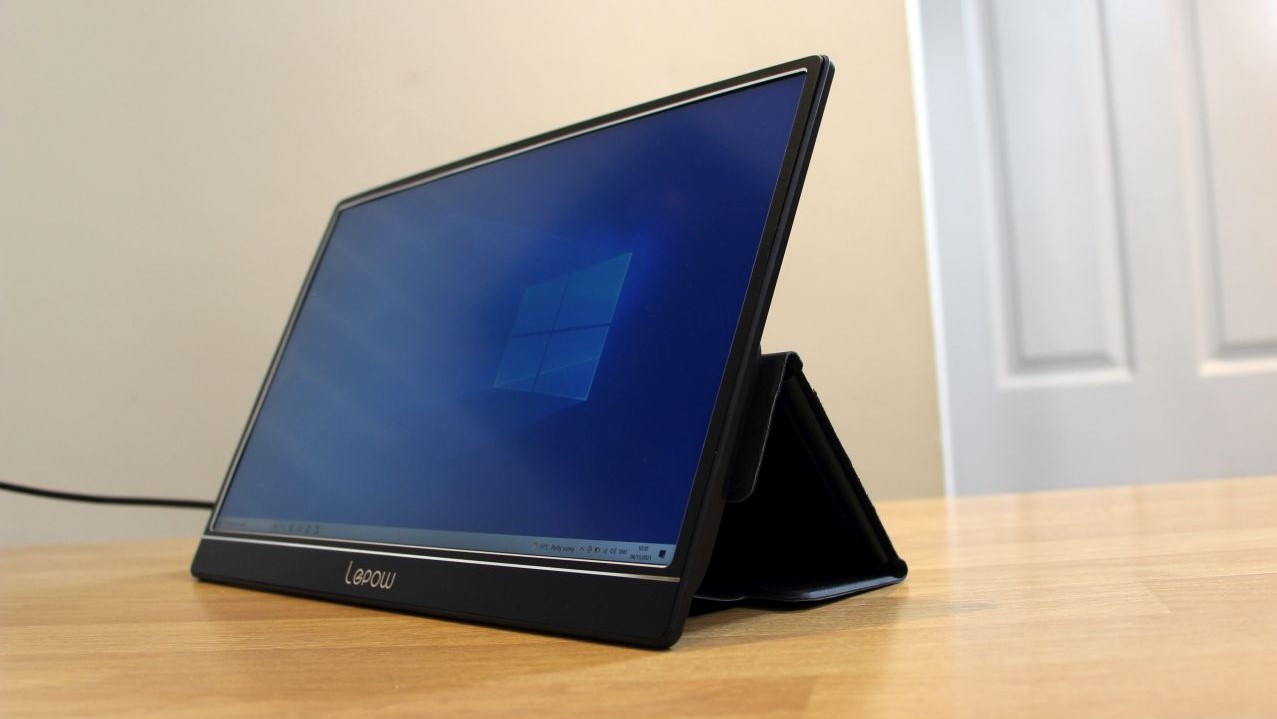
Design and features
The H1 is a slick and modest bit of kit. It’s got slim bezels on three sides of the 14in display, and it’s finished from black material with some subtle chrome-effect highlights around the screen itself. The stand is made from soft-touch plastic, and the entire unit looks smart – easily good enough to blend into any work environment. It’s available in a grey variant, too.
The H1 only weighs 1.7 pounds (0.77kg) and it’s 0.34in (8.6mm) thick, so it’s hardly a big, bruising peripheral – you can sling this display inside your backpack and it won’t weigh you down. It’s got reasonable build quality, and we’re confident that it can withstand frequent transport.
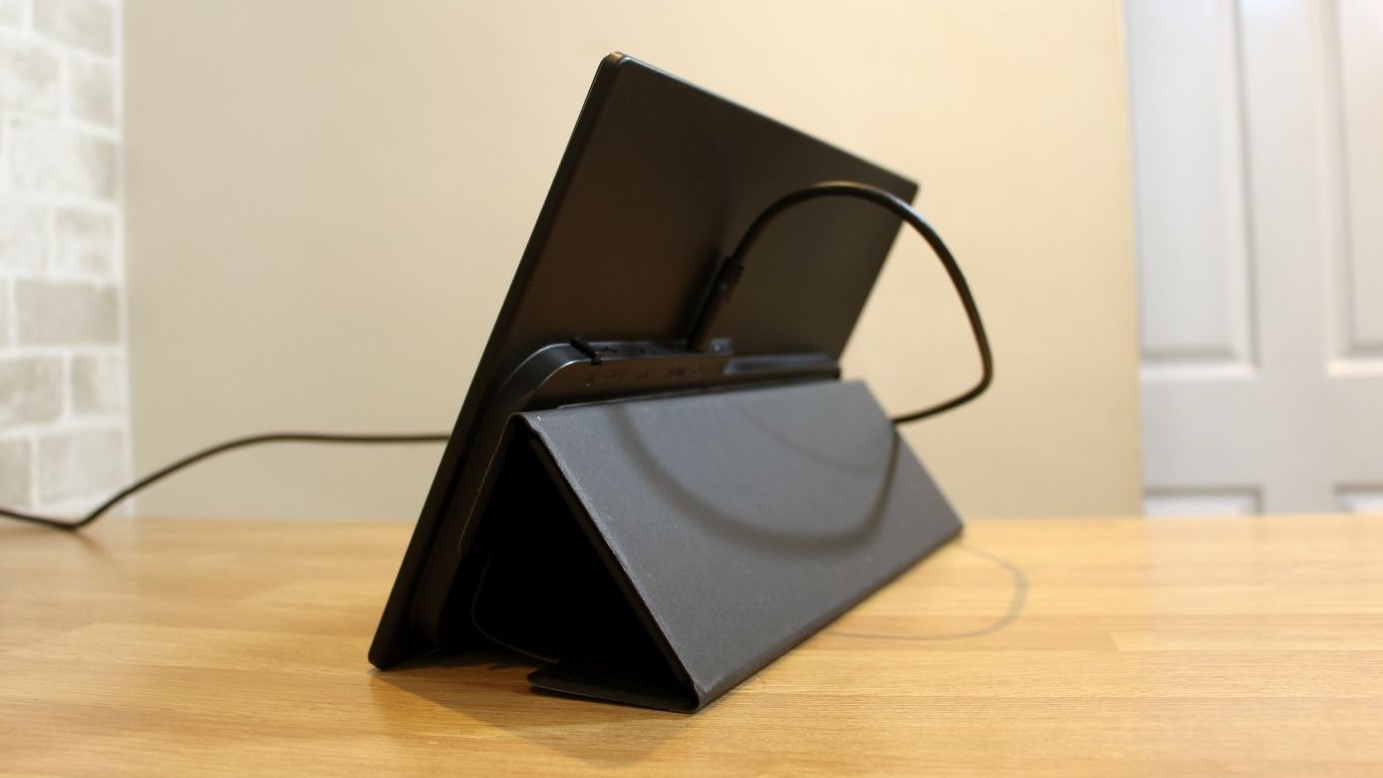
The display’s folding stand combines with grippy material on the rear of the panel to allow users to adjust the Lepow’s tilt angle, and a flap allows the display to stand in portrait mode. That’s it for adjustment, though, and the case isn’t particularly grippy – it stays still when it’s on your desk, but it only takes a tiny nudge to make it move. In busy office environments, that could be an irritation.
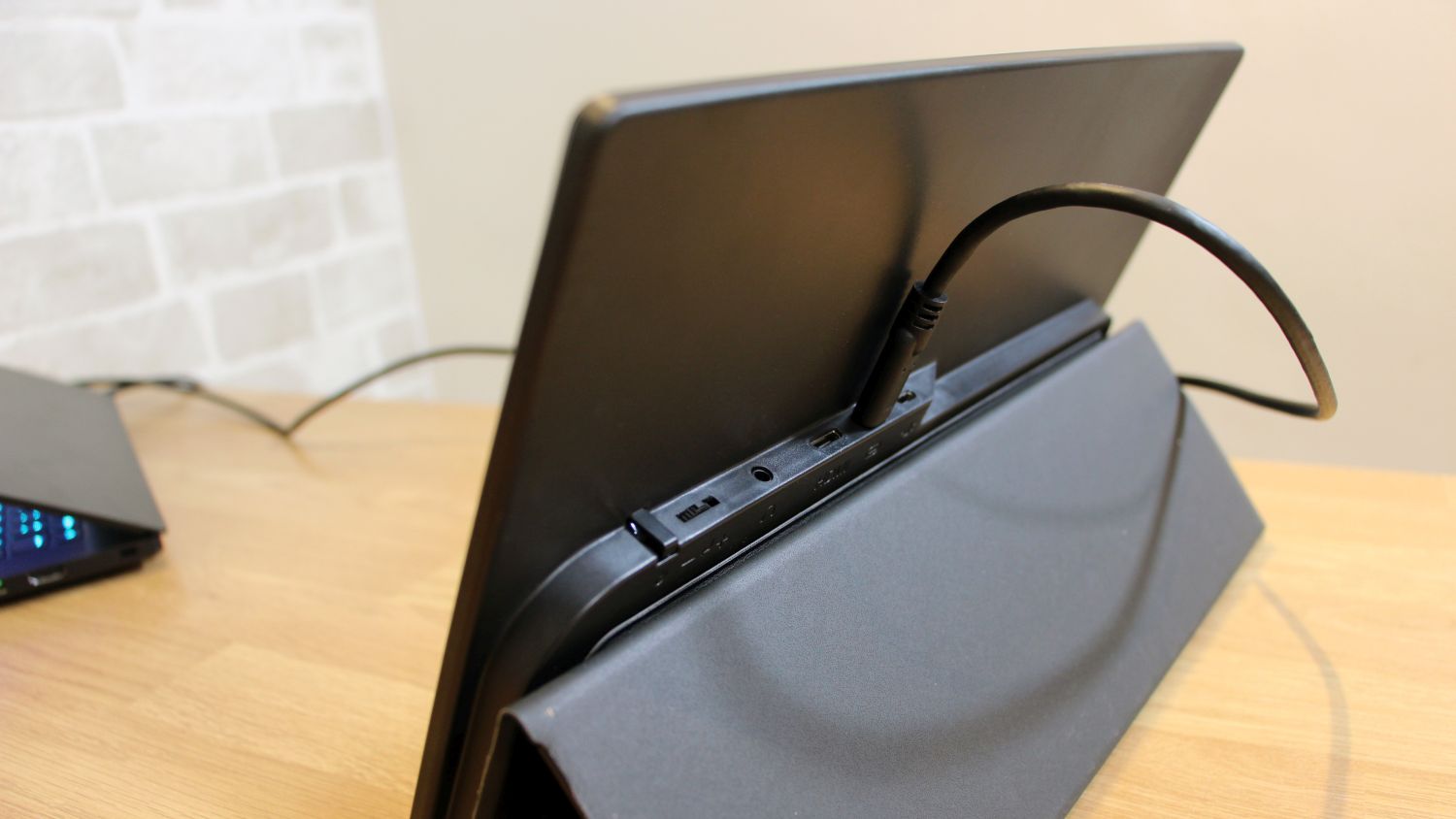
On the rear of the Lepow you’ll find two USB-C ports, a mini-HDMI adapter, and an audio jack. All the ports face upwards, which is handy for easier access. One of the USB-C ports handles display inputs, while the other provides power from an included AC adapter. If you don’t want to drain your laptop’s battery then it’s handy to have the two ports. Lepow also includes USB-C and HDMI to mini-HDMI cables with this display, but you don’t have a full-size USB adapter.
There’s a small dial at the back of the display. It rocks left and right and functions as a button, and it controls the H1’s on-screen menu. This can alter monitor settings, like the brightness and color profile, but the dial is awkward to reach and fiddly to use. At least it’s unlikely that people will be changing any of the settings on this display.
On the inside, the H1’s 14in panel serves up a 1080p resolution and IPS technology. That’s entirely normal for a portable display, and it should handle everyday work tasks. The 60Hz refresh rate is acceptable for everyday workloads but not suitable for games or fast-paced animation, though, and this display only adheres to mainstream color gamuts.
The H1 is a decent bit of kit, but its design does have pros and cons that any potential purchaser must consider.
This display doesn’t attach to your laptop, for starters. While that does add versatility in terms of positioning the screen in your environment, it does mean that you’ve got to bring a second device with you rather than just have your secondary display on the back of your laptop. Also be aware that this is a 14in panel – for this price, you may prefer a 15.6in model.
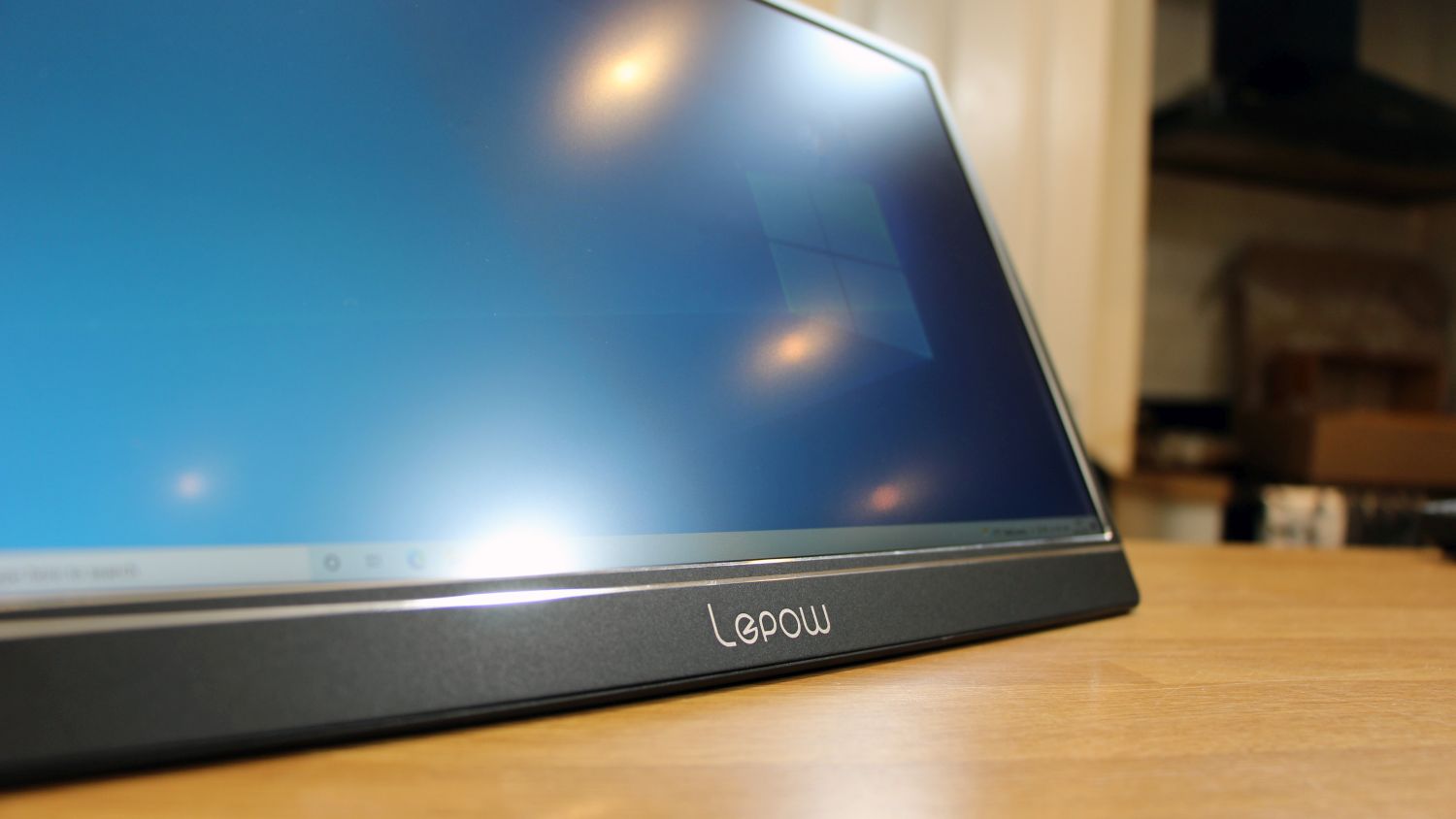
This isn’t a touchscreen, and you may not like the reflective nature of its glossy coating, especially if you’ve got lots of lights around. And, while the H1 does have speakers, they’re weak, tinny, and lack bass, so they’re only useful if you have no other options.
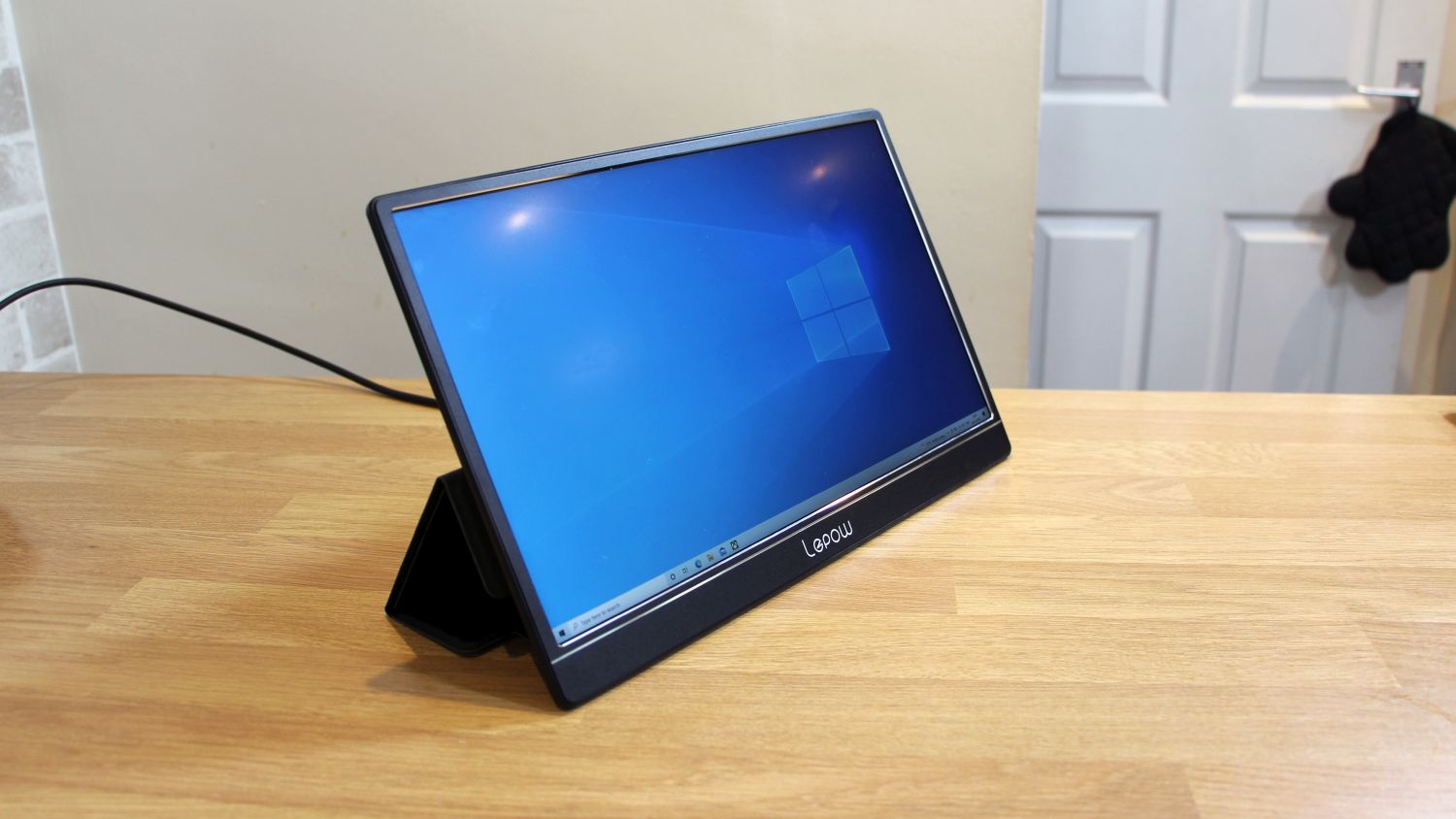
Performance
The H1 has enough quality to handle basic, everyday computing, but it can’t produce anything better than that.
Here is the Lepow Lite H1 configuration sent to TechRadar Pro for review:
Panel size: 14inch
Panel type: IPS
Resolution: 1,920 x 1,080
Brightness: 300cd/m2
Contrast: 1,000:1
Refresh rate: 60Hz
Inputs: 2 x USB-C, 1 x mini-HDMI, 1 x audio
Weight: 1.7 pounds (0.77kg)
Dimensions: 14.5 x 8.8 x 0.34in (368 x 224 x 8.6mm) WxHxD
The panel’s brightness level of 157cd/m2 is fine for indoor use but not high enough to make the H1 easily visible outdoors. The black point of 0.12cd/m2 is good and the resulting contrast ratio of 1,308:1 is solid, though, and that does help the Lepow deliver a bit more punch and vibrancy than the Duex Plus – it’s noticeably bolder.
The Delta E of 4.26 is middling, but the color temperature of 6125K is closer to the ideal 6500K figure and on the warm side, so this display doesn’t have the washed-out colors of the pricier Duex panel. And while the H1’s sRGB coverage ratio sits at a mediocre 60.4%, that’s another area where this panel is a little better than the Duex.
This panel handles web pages, office apps, and communication tools without any issues, and there’s slightly more punch and depth on this panel than on the H1. Everything looks a little bolder and more vibrant on this display, which means that this screen supplies a more satisfying experience.
The lack of color accuracy and gamut coverage means that the Lepow is not good enough for any serious creative tasks, though, and you’ll get better brightness and color accuracy from any mid-range or high-end laptop display or a proper external panel.
Final verdict
The Lepow Lite H1 does not have brilliant image quality, with its lack of brightness and broad color ability the most prominent issues – but in this regard, it’s still good enough for basic daily computing, and it’s better than the rival Duex Plus, too.
Elsewhere, the Lite H1 has a sleek, slim design and decent build quality. It’s also far cheaper than the rival Duex. It may not attach to your laptop, but this screen is easy to use and has marginally better image quality. It’s a reasonable choice if you need a portable display for your notebook.
Need an additional screen for your laptop? Check out our roundups of the best portable monitors and best USB-C monitors
0 comments:
Post a Comment